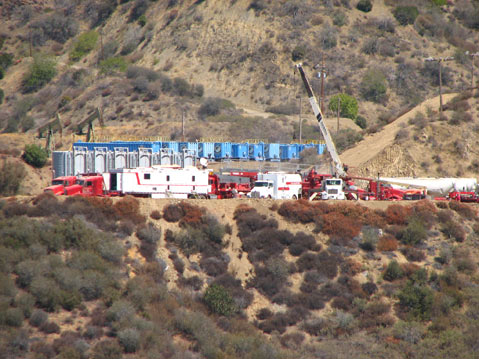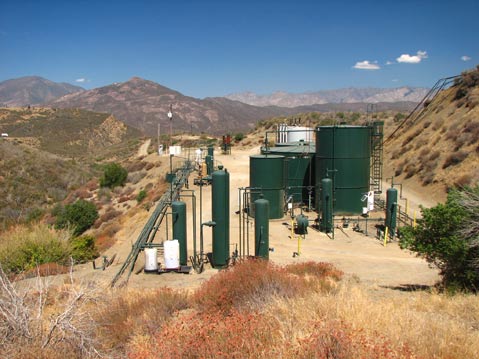More Fuss Over Fracking
State Proposes Fracking Rules; D.C. Republicans Want Less Oversight

The growing fear and fuss over the oil industry’s practice of hydraulic fracturing — known more controversially as “fracking,” in which large amounts of water and chemicals are pumped underground to crack rocks and release resources — got attention in both Sacramento and Washington, D.C., this past week, with California proposing new rules to regulate it while the Republican-stacked U.S. House of Representatives is trying to make all energy extraction much easier. And then there’s even Hollywood, where, on Tuesday, a collection of eco-minded celebrities — including Daryl Hannah, Lance Bass, Malin Åkerman, and Wilmer Valderrama — released a series of “What the Frack?” videos that call for an outright ban.

The issue has special resonance in Santa Barbara County, which was the first jurisdiction in California to pass its own rules about fracking after finding out the practice was occurring near Los Alamos a couple years ago. More recent investigations by Santa Barbara’s Environmental Defense Center and Truthout.org have also revealed that fracking is occurring on the region’s offshore oil rigs, while Los Padres ForestWatch is calling attention to fracking in Los Padres National Forest at the Sespe Oil Field, which the nonprofit also claims is a source of the “microtrash” that’s harming California condors nearby.
Currently, California’s Division of Oil, Gas, and Geothermal Resources (known as “DOGGR”) has no special rules in place for fracking, but with evidence that more might occur in California’s extensive Monterey Shale formation, State Senator Fran Pavley, of Agoura Hills, introduced SB 4 earlier this year with an aim to have regulations in place by 2015. On Friday, the proposed regulations were released, setting off a slew of reactions from both environmentalists (who complain the draft regulations don’t go far enough to protect the public) and the oil industry, which appreciates the state’s “balanced” approach.
“These regulations are extensive but strike the right balance that will result in an environmental platform which will ensure that the potential energy resources contained in the Monterey Shale formation can be responsibly developed,” explained Catherine Reheis-Boyd, president of the Western States Petroleum Association. Both ForestWatch and the Environmental Defense Center were encouraged by the progress but continue to demand a moratorium on fracking until these rules are in place, and the Center for Biological Diversity (CBD) was most strident in its analysis. “These rules mostly take the narrowest, most oil industry–friendly approach possible under state law to governing fracking,” said CBD’s Kassie Siegel. “They will permit fracking to spread across the state, endangering our air, water, communities, and climate.” [For more detailed reactions, read this article from last week.]
Meanwhile, in D.C., the Department of the Interior is crafting its own rules for fracking on federal lands, where mineral resources are mostly overseen by the Bureau of Land Management. (While the Forest Service manages Los Padres National Forest, for instance, the BLM handles the Sespe Oil Field production.) But if House Republicans have their way, that process would be undermined, and all energy extraction would become easier and quicker to get permitted, while also adding thousands of dollars in extra fees to pay for any groups that seek to oppose such drilling. On Wednesday morning, the House Republicans were set to vote against broad Democrat opposition to those two laws, which the White House is likely to veto.
Congressmember Lois Capps spoke out against them on the floor of the U.S. Capitol on Tuesday. “These bills are nothing more than reckless giveaways to big oil and gas companies that put American families and the environment at risk,” said Capps, who also sent a letter to the Department of the Interior and Environmental Protection Agency calling for an immediate moratorium on all offshore fracking until a study is done to determine the possible environmental impacts. “The inadequate oversight is troubling,” wrote Capps. “Any leak, spill, or blowout offshore would be particularly difficult to detect and contain, especially considering how little is known about the chemicals being used … . Furthermore, drilling of any kind in the ocean is inherently much riskier than onshore drilling, which is illustrated by the fact that a majority of these fracs have occurred from offshore platforms with a history of spills.”
Hollywood’s take is even more blunt. “What the frack, Governor Brown?” asks actress Julie Bowen in one of the new videos. “Fracking poisons water. Ban it now. You’re better than this.”


